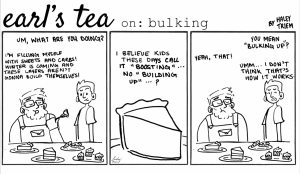Opinion: Fast fashion’s waste and pollution needs to be minimized
With Forever 21 filing for bankruptcy, we’re reminded of the waste and pollution created by the cheap textile industry.
SANTA MONICA, CALIF. – JULY 11: The Forever 21 store at Santa Monica Place on Thursday, July 11, 2019 in Santa Monica, Calif.
October 13, 2019
Forever 21 announced it filed for bankruptcy Sept. 29. The fast-fashion chain has 800 stores worldwide and made $4.4 billion in revenue at its peak, according to Business Insider. Now it is planning to shut down 350 stores, 178 of which are in the US..
It is unfortunate that this occurred to Forever 21 and that many people will lose their jobs as a result. However, it is a big win for the Earth that this company is not performing as well.
Fast-fashion companies such as Forever 21 are detrimental to the environment and there are better alternatives than supporting unsustainable companies. Companies such as Forever 21 partake in unsustainable methods in order to produce cheap clothes quickly, hence the label of “fast fashion.” The fashion industry accounts for 10 percent of global carbon emissions, according to Forbes, which makes it second highest in all industries after fossil fuels. The resource waste is a major threat to our environment, but the culture of waste that stems from fast fashion is even more dangerous.
Having access to inexpensive clothing makes us think that clothing is disposable and that we can buy more whenever. In reality, clothing is far from disposable. Clothes that are trashed get incinerated in landfills and release carbon emissions. According to the Environmental Protection Agency, more than 10 million tons of textiles went to landfills in 2015. These statistics are outrageous and multiple companies refuse to change their ways because they put profit over our planet.
Luckily, we can make a change with our wallets. Although it is tempting to splurge in cheap clothing, especially as a college student, there are many ways that you can treat yourself and still be friendly to your planet.
For starters, buying fewer clothing items is the most sustainable choice you can make. Even if you are buying products from environmentally friendly companies, they still require resources to be made and use fuel to be transported. You might think that buying that new garment will give you gratification, but that happiness won’t last long. Instead, pull out some scissors and re-design clothes that you already own for a new look.
One of the most important lifestyle changes you can make is not throwing your clothes out. After all, the majority of them are made from nonbiodegradable fiber and will accumulate in landfills. Instead of trashing your old clothes, donate them to people you know, charities, or thrift stores.
An alternative to buying new clothes is to buy second-hand. Iowa City has a variety of thrift shops around, such as The Second Act, Crowded Closet, and Goodwill. Thrifting is good for the environment, but it is even better for your wallet. Most stores have lower prices than their retail counterparts, even if the items they are selling are from brand names.
Forever 21 and stores like it fuel climate change. It is our job as consumers to rethink what companies we support.
Columns reflect the opinions of the authors and are not necessarily those of the Editorial Board, The Daily Iowan, or other organizations in which the author may be involved.






